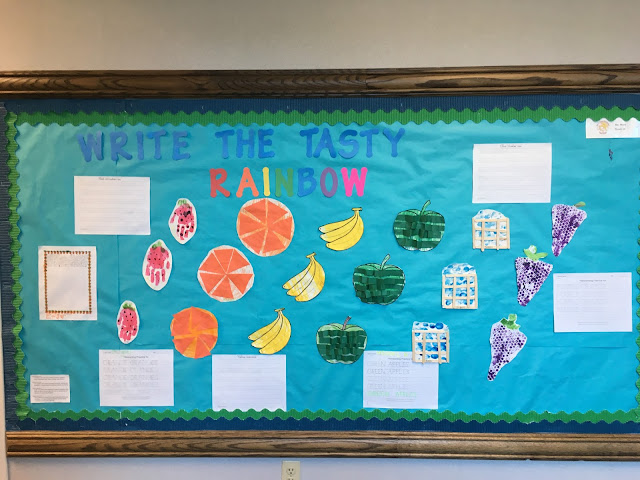It may be because I've been drinking way more coffee than usual lately or maybe I'm just operating on a super energetic wavelength, but I have been all about keeping things fresh in the classroom. While I only update this blog every few months (if I'm lucky), my other side gig is a sustainable lifestyle blog (check it out
HERE) and it's got me thinking about all of the different ways I can make the smallest footprint on the earth as possible. Since my apartment complex doesn't recycle, I often have a stash of recyclable items laying around and over the last few days, I've turned them into all sorts of fine motor/OT activities for my self-contained intermediate autism class. Many of these activities would be great for toddlers or pre-k classes, as well! Scroll through and enjoy!
1) Starbucks Put-In Task- I was bad the other day and forgot to bring a re-usable cup on my coffee run, so when I got a plastic cup, I knew I had to re-use it. All I did was cut straws into different lengths and I have the perfect put-in task!
2) Hand/Eye coordination: Poke some holes into toilet paper/paper towel tubes and have your students feed straws through them.
3) Tissue Box Match-Up: Tissue boxes come in such cute patterns these days that I like to save them (usually for token boards and tokens... they are extra durable, especially when laminated)! I had a huge stockpile and my students love to match, so I turned them into a file folder game!
4) Tissue Box Clothespins: I used some of my other tissue box pieces to create a matching activity that also requires fine motor skills. Just glue swatches to tag board and matching swatches to clothes pins and have your kiddos match them up!
5) Money Put-Ins: So many containers that you'd just toss out are great for put-in tasks. I love to use empty Play-doh cups and this old fried onion container for a money put-in task. Poker chips also work well with these containers!
6) Magnetic Letter Put-In: Yep... that's an old sour cream container! I use magnetic letters/numbers with this task and it's a classroom favourite. It's also a preferred calm-down activity! Another way to use sour cream containers and make things a bit more academic is to paint them and give your students buttons in matching colours.
7) Button Book: Speaking of buttons, I used some old felt and my collection of mismatched buttons (you know... the extra ones that come on clothes that never get used and stockpile up over time?). I have a sewing machine so I was able to sew my book together and add pockets, but felt is so versatile that it could be hot glued together. The other great thing about felt is that you can just cut slits for the button holes and don't need a machine to make actual button holes! You could also cut felt strips, hand sew one button onto the end of it, cut a button hole and have students button them together to make a chain.
8) Pom-poms and Egg Carton Put-In Activities: These were so easy to make! Paint one egg carton and have students use tweezers to put-in matching pom moms or write numbers in each egg slot and have students use tweezers to count out the number of pom moms for each slot.
9) Pom-Pom Tubes: I painted a few toilet paper tubes and hot glued them to the inside lid of a shoebox. Students use tweezers to pick up and drop pom-poms down the tube with the matching colour. Even my higher functioning students like to use this for imaginative play!
10) Cart Put-In Activity: I glued scrap paper to the outside of an empty oatmeal container, used a box cutter to put a slit in the top, and swap out different flash cards as a put-in task. I make it more academic by having students label what is on the card (higher functioning students have to answer math facts on higher-level flash cards). Once they've labeled/answered, they drop the card into the slot. This is another favourite calm-down activity in my classroom!
11) The Spiderweb Maze: I happened to have an empty bin lying around, I wove scrap yarn through the holes in the sides of the bin and students use chopsticks with cheaters to pick up pipe cleaner "worms" without touching the spider web! What a fun way to use stuff that I already had hanging around the classroom!
12) Lid Match-Up: This one is literally the easiest thing to put together and is something that my school occupational therapist says she's continually shocked that students don't know how to do. Just acquire bottles and jars that all have different types of lids (I'm still working on my collection), have students match the container to the lid, and help them learn how to open and close them!
Happy fine-motoring! I hope that you and your students enjoy these ideas!





















